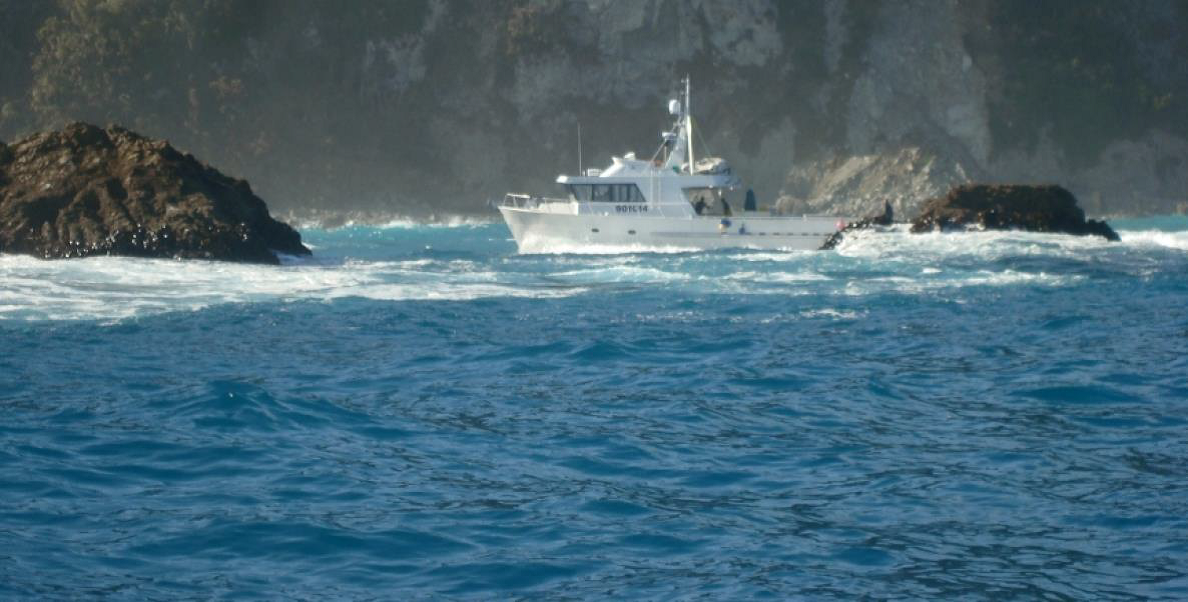Spatial access
Lobsters are not uniformly distributed over every square metre of the seabed within a management area boundary. Rock lobster fishing is generally carried out on suitable reef habitat within reasonable proximity to the shoreline.
Rock lobsters are generally sedentary and gregarious creatures and the sizes and numbers of rock lobster in any one location are normally factors of habitat and environmental conditions. Not all rock lobsters are vulnerable to capture by commercial potting.
Commercial rock lobster fishing activity has historically been spread across all fishable habitats accessible to commercial vessels. The catch histories of these fishable habitats provided the information on which total allowable commercial catch values (TACCs) were set and individual transferable quotas (ITQs) allocated in 1990. These histories were predicated by the effort deployed over the fishing grounds.
Similarly, the information that supports the stock assessments and subsequent total allowable catch TAC/TACC allocations and adjustments of recent years is a function of commercial effort deployed on specific fishing grounds.
Stocks are resident in fishable areas
Fishermen agree that each fishable area has a defined productive ‘carrying capacity’ which is linked to the overall regional abundance of rock lobsters in any one season. Under this scenario a reef system which is known to produce say 15% of the total commercial landings for any one region will likely produce 15% of 300 tonnes or 15% of 500 tonnes dependent on overall stock abundance.
Given the sedentary nature of the animals, if the reef system in the example above is closed to commercial fishing an explicit quantity of catch is lost to the industry. Stock monitoring data generally confirm that resident rock lobsters which would otherwise be vulnerable to capture do not move out of the closed area to be available for capture elsewhere.
Adverse effects of loss of spatial access
Loss of spatial access to traditional lobster fishing grounds has an adverse effect on commercial fishing and has potential to lead to excessive effort being deployed in the remaining fishable area. In time that effort will be demonstrated to be unsustainable unless matched by a corresponding increase in overall stock abundance.
This adverse effect is further compounded if the area closed to commercial fishing is habitat that supports particular sizes of rock lobster, or is one which is accessible at certain times due to adverse weather and sea conditions elsewhere. In most rock lobster fisheries, the animals stratify by size, by sex, and by depth, at different concentrations at certain times of the year according to biological cycle and prevailing environmental conditions.

In the increasing competitive live lobster market, size for price is a vital consideration for fishermen. Within season, price differentials for specific grades of lobster fluctuate sometimes on a weekly basis and an experienced fisherman will have a ‘portfolio’ of fishing territories that he/she will target according to market preferences. Any loss of access to a productive territory will have an ongoing significantly adverse economic impact on fishermen and processors.
The rock lobster industry is sustainable
The rock lobster industry is certain that the activity of fishing using pots presents no adverse threat to the marine environment or to the utilisation of rock lobster fisheries, whilst ensuring sustainability.
It can be demonstrated that most rock lobster populations have increased over time since 1990 and that the size frequency distribution of rock lobsters (the range of sizes/weights of lobsters being landed) has increased over the same time in most regions. Where they have not, management interventions have been made to reverse declines. The NZ RLIC believes that it can also be shown that non-commercial expectations of catch have generally been satisfied in all management areas as stock sizes have increased.
The NZ Rock Lobster Industry Council position
The Minister responsible for fisheries has an important statutory role in deciding the outcome of marine reserve, taiapure, and mataitai applications.
The NZ RLIC has encouraged Ministers to focus on the desired outcomes of these applications, and to properly evaluate the motives of the applicants. The rock lobster fisheries management regimes work well regarding sustainability, utilisation, and environmental protection. They are not enhanced by denying access to productive fishing grounds or by imposing unduly restrictive fisheries regulations.
Spatial access is one of the fundamental characteristics of ITQs. In its advocacy to consolidate and strengthen commercial property rights within the overall rights-based framework of the QMS, the NZ RLIC will continue to challenge all proposals to close rock lobster fishing grounds to legitimate extractive use.
Ideally, a properly constituted rights-based regime will enable sector groups to trade-off spatial access opportunities within the overall context of an agreed Fishery Plan.
